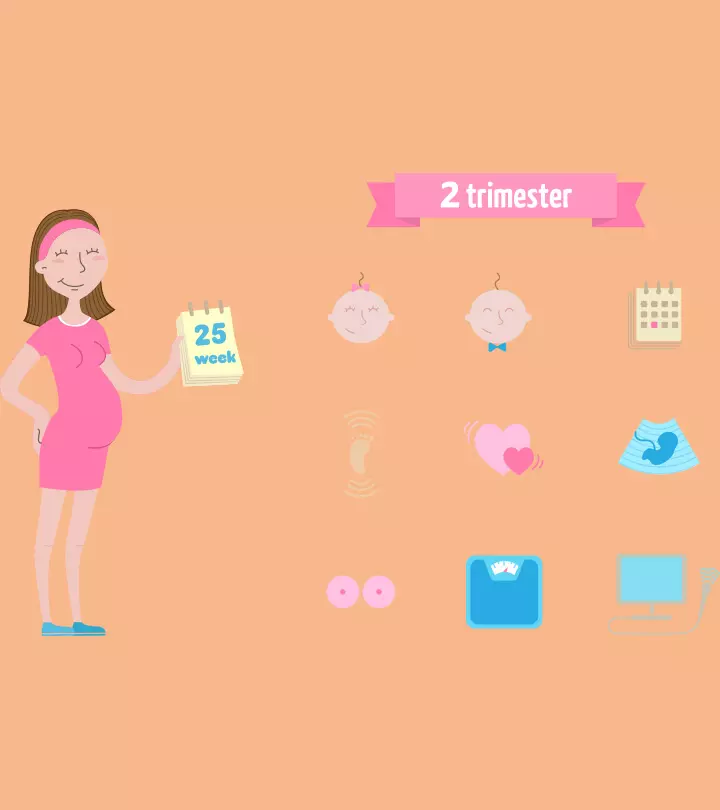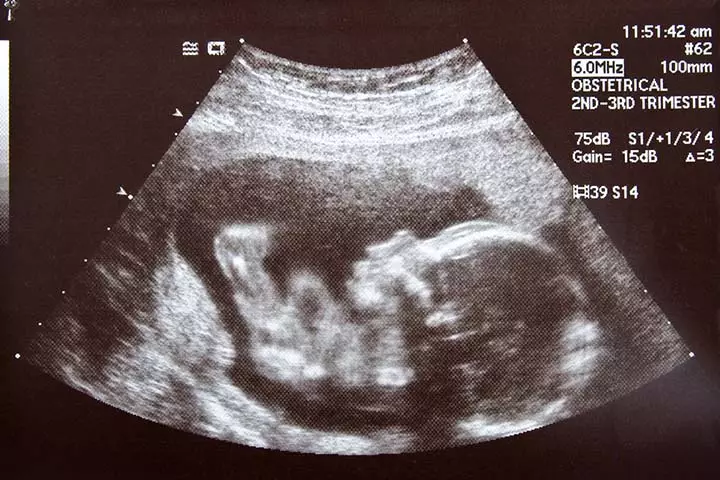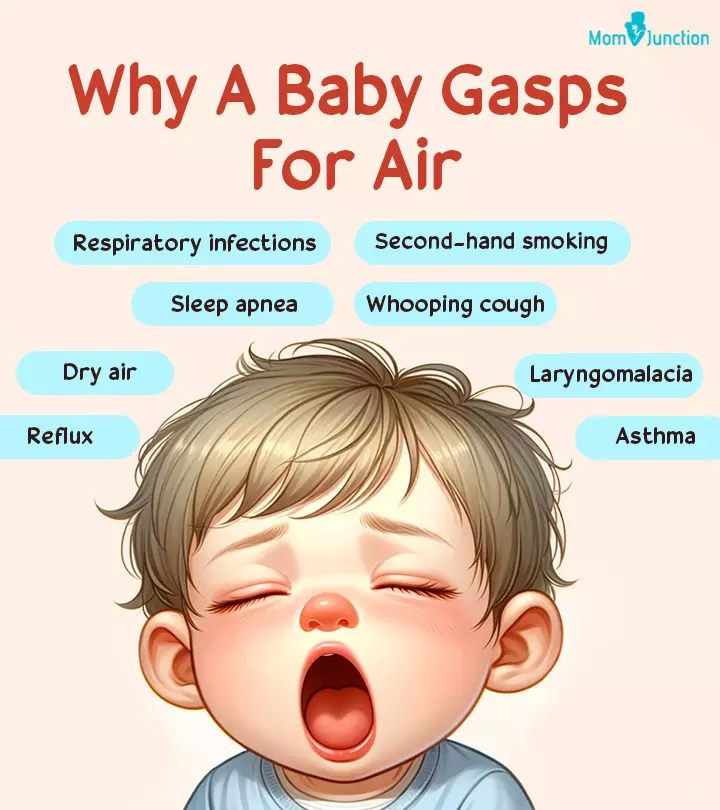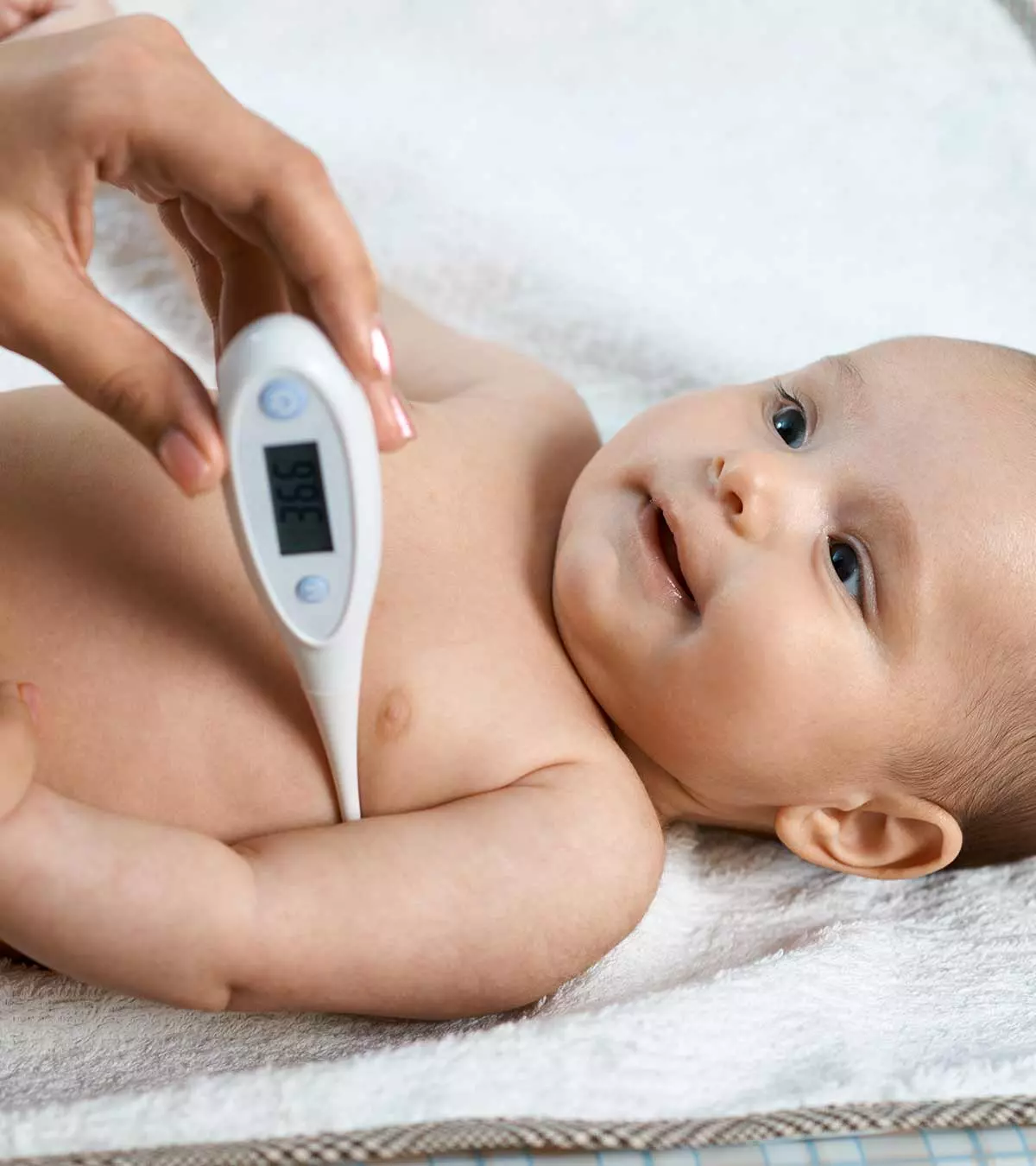
Image: Shutterstock
The second trimester of pregnancy is between weeks 13 and 27 (four to six months). During this time, your “baby bump” may become more visible, and you may begin to feel the baby’s movements. Many women find relief from their morning sickness too.

As the body grows in the second trimester, you may face some troubles; however, this is one of the easiest trimesters of pregnancy. Hence, focus on remaining healthy and positive during this time as the baby’s brain develops.
This post will tell you about the physical changes you will notice, emergency symptoms to look out for, baby growth milestones, and tips to stay healthy in this trimester.
Key Pointers
- Women may notice changes such as lower abdomen aches, backache, gum bleeding, and breast enlargement during the second trimester of pregnancy.
- You should get in touch with a doctor if you notice vaginal bleeding, nausea, fever, jaundice, and suspected water break.
- By the end of the second trimester, the organs and systems of the fetus are formed, and it continues to grow.
What Are The Body Changes In The Second Trimester?
Hormonal changes and the increasing size of the baby can cause certain body changes and symptoms in pregnant moms (1).
1. Lower abdomen aches: Many pregnant women may experience cramps and aches in the lower belly during the second trimester. This can be due to the expansion of the uterus and its pressure on the nearby ligamentsiA connective tissue that connects bones in the joints, providing stability and flexibility and muscles. Stretched ligaments can also cause sharp pain. A warm bath, changing position, placing a hot pack or hot water bottle wrapped in a cloth on the lower belly, and certain relaxation exercises may help reduce the cramps.
2. Backache: Growing babies can put pressure on the back, causing soreness and aches. An anonymous blogger mother shares how she felt extreme pain for the first time during the 23rd week of her pregnancy. She says, “Yesterday, currently at week 23, I experienced back pain for the first time and it was intensely painful. It was a sharp pain in my lower back which came from nowhere, just randomly as I was laying down in bed reading a book. I felt like lightning had struck my spine. I have not felt such pain ever in my life and I will do all the yoga in the world not to experience that pain ever again (i)!” Sitting straight, avoiding constant weight lifting, wearing low-heel shoes, and using a pregnancy pillow during sleep may help relieve backaches in pregnancy.
3. Gum bleeding: Hormonal changes can make the gums more sensitive, swollen, and tender during pregnancy. Increased circulation in the gums can cause bleeding more easily. You may avoid harsh brushing, use brushes with soft bristles, and floss gently.

4. Braxton-Hicks contractions: Irregular, mild contractions can be felt during the second trimester. This may feel like slight tightness in the abdomen and often occurs in the afternoons or evenings. Intense physical activity, dehydration, full bladder, and sexual intercourse could trigger these contractions. Relaxing and drinking water may help to relieve these contractions. You may seek medical care if the contractions are steadily increasing since this can be a sign of preterm labor.
5. Breast enlargement: Pregnancy hormones also increase the size of the breasts by increasing the fat deposits and the size of milk glands. This is a natural process, preparing your body to nurture your baby. Using a supportive bra with an appropriate cup size can make you feel more comfortable.
6. Nosebleeds and congestion: Hormones can cause mucus membrane swelling in the nose. This may result in a stuffy nose and snoring. These changes may also increase the likelihood of nose-bleeding. Nasal saline sprays and keeping air moist with humidifiers may help reduce these issues.
7. Vaginal discharge: Thin, milky white vaginal discharge during pregnancy can be normal in pregnancy. You may seek medical care if the discharge has a foul smell, yellow or green color, or contains blood.
8. Dizziness: Growing uterus may exert pressure on blood vessels, and mothers may feel dizzy at times. Standing for long, dehydration, hypoglycemiaiA condition characterized by a fall in blood sugar levels to lower than the normal range , and hormonal changes can also cause dizziness in the second trimester. Avoiding lying on your back and standing for long periods and adequate food and water intake may help prevent dizziness in pregnancy.
9. Frequent urination: Pressure of the uterus on the bladder can increase the urinary frequency in pregnancy. Clear urine is an indicator of hydration in pregnancy rather than frequency.
10. Hair growth: Hair can become thicker and grow more due to pregnancy hormones. Some women may have hair on their back, arm, or faces during pregnancy.
11. Headache: Many women can experience headaches during pregnancy. This can be manageable with Tylenol. However, if it persists, you may seek a doctor’s prescription.
12. Leg cramps: Muscle contraction on legs is common in the second trimester, especially during night hours. Stretching legs before bedtime, regular exercise, comfortable shoes, and adequate nutrition may help reduce leg cramps in pregnancy. You may eat more magnesium and calcium-rich foods.

13. Heartburn (indigestion): Hormonal changes and pressure of growing babies on the digestive system can make pregnant mothers more vulnerable to heartburn. Avoiding spicy, acidic, and greasy foods and eating frequent smaller meals may help relieve indigestion.
14. Constipation: Hormones can cause constipation during pregnancy. Adequate physical activity and consuming fiber-rich foods can prevent this condition.
 Quick tip
Quick tip15. Hemorrhoids: Rectal and anal veins can be swollen due to pressure from the uterus. Avoiding constipation and over-the-counter medications, such as topical H and hydrocortisoneiA steroid that works on the body’s immune system and helps reduce symptoms like redness, swelling, or itching , and sits baths may help manage hemorrhoids in pregnancy.
16. Quickening: Fluttering movements felt in the abdomen mid-gestation (20 weeks) is called quickening. Some women may experience it by the end of the second trimester or in the third trimester.
17. Skin changes: Skin may appear flushed on the face due to hormonal changes. Melanin pigment can also cause brown marks on the skin. Stretch marks may also appear as the belly expands. All these skin changes gradually disappear during the postpartum period.
18. Urinary tract infections: Pregnant women are more vulnerable to UTIs. Bacterial infection can cause the increased urge to urinate cloudy or smelly urine and pain or burning sensation while urinating. You may seek medical care if you develop symptoms of UTI during pregnancy.
19. Weight gain: During the second trimester, appetite can be better as the morning sickness reduces in most women. Weight gain is often seen in this trimester.
20. Spider and varicose veins: Increased blood flow can cause tiny red veins in the skin called spider veins. The pressure of growing babies on blood vessels may reduce blood flow from the legs and lead to varicose veins in some women. Moving legs, elevating legs, and using a support hose may reduce these issues.

What Are The Emergency Symptoms In The Second Trimester?
Contact your doctor immediately if you experience any of the following symptoms during the second trimester (2).
- Vaginal bleeding
- Severe vomiting or nausea
- Fever
- Severe abdominal pain
- Seizures, often due to preeclampsia or hypertension, type 1 diabetes, or hypoglycemia
- Suspected water break (ruptured membrane)
- Jaundice
- Rapid weight gain or weight loss
These symptoms may occur due to various reasons. Some of them may threaten fetal viability and risk the life of the mother if left untreated. You may contact the doctor or visit the emergency department if you cannot contact your doctor on time. It is crucial to address these concerns promptly, particularly when they pertain to gynecology.
How Does The Baby Grow In The Second Trimester?

By the end of the first trimester, all organs and systems are formed in the fetus, and they continue to grow in the second and third trimesters. The weight of the fetus increases over time. A fetus may weigh about two to three pounds and grow 13 to 16 inches long by the end of the second trimester (3).
The following fetal developments are seen during the second trimester (3).
During the second trimester, various developments occur in the fetal anatomy (3). Let’s take a look at them.
- Vernix caseosa, a creamy white substance, appears on the skin
- Fetal movements, such as kicks, are felt
- Development of sucking and swallowing reflexes
- Eyes and ears form at their place and baby can hear the voice
- Response to certain stimuli, such as maternal voice
- Placenta becomes fully formed
- Fingers and toes are separated, and nails are grown
- Fetus may go through cycles of sleep and wakefulness
- Hair growth occurs on the head, and skin can be red and wrinkly with downy hair (lanugo)
- Eyelids begin to open, and eyelashes and eyebrows are visible
- Fat begins to deposit in the fetus
- Complex brain development begins in the second trimester
 Did you know?
Did you know?A fetus born at the end of 24 weeks of pregnancy can survive in a neonatal intensive care unit if they do not have any life-threatening anomaly.
Are There Tips To Stay Healthy In The Second Trimester?
You must adopt a healthy lifestyle with adequate nutrition throughout the pregnancy. The following tips may help to cope with the second-trimester changes (4).
- Eat well-balanced meals to meet daily nutrition needs. Additional 340 calories per day are needed from the beginning of the second trimester for mothers with one fetus. The calorie requirement can be more in multiple pregnancies, such as an extra 600 calories per day for twins and 900 extra calories for triplets.
- It is recommended to drink eight to 12 cups of water a day during pregnancy, even if you do not feel thirsty. Adequate water intake can help eliminate waste products, such as urea, from the body.
- Exercise regularly to promote good health and relieve body aches. This may also help maintain a healthy weight gain during pregnancy. You may also talk to your doctor to know the safest and effective physical activities based on individual factors.
- It is important to prioritize prenatal care by taking the recommended prenatal vitamins and other supplements daily. Iron, folic acid, calcium, magnesium, omega-3 fatty acids, choline, vitamin B, and vitamin C are the most needed nutrients in pregnancy. Folic acid 600 mcg is recommended for the second and third trimesters. Certain vitamins should not be taken in excess, for example, vitamin A, as it can cause birth defects.
 Research finds
Research findsOther dos and don’ts to stay healthy during the second trimester include:
- Moisturize the belly to reduce stretch marks and itching during the second trimester.
- Avoid excess heat since it may cause heatstroke.
- Avoid contact with toxins and chemicals since they can be hazardous to the fetus.
- Avoid X-rays and other harmful diagnostic procedures during pregnancy.
- Practice good hand hygiene to reduce the risk of viral and bacterial infections.
- Maintain good dental health and visit your dentist regularly.
- Always seek prescriptions for any condition after informing that you are pregnant to avoid teratogenic medications. Avoid over-the-counter medications and self-treatments during pregnancy.
What To Expect In Second Trimester Antenatal Visits?
Doctors may focus on the baby’s growth and health during the second-trimester visits. Blood pressure and weight are assessed in all visits. Uterus size is estimated by measuring fundal height, the distance from the top of the fundus to the pubic bone. Assessment of fetal heart rate and movements is also possible during the second trimester.
You may also discuss any symptoms or signs concerning you during this time. Doctors may also suggest nutritional intake and physical activity requirements for the second trimester. In addition, various genetic testing and blood tests might be offered during these visits. These check-ups help ensure the health of both mother and child.
How To Prepare For Birth In The Second Trimester?
Although childbirth is still some time away, you may begin preparations from the second trimester to make your third trimester easier. The following measures may help expecting moms prepare for the third trimester and birth.
- Attend baby care classes online or from an educator. This may reduce worries related to caring for the newborn and breastfeeding after childbirth. They may also teach you first aid for newborns and parenting tips. First-time moms can benefit more from prenatal education.
- Invest time to do mommy and baby shopping in the second trimester since you may feel less morning sickness and move around more easily as compared to when you are in the third trimester.

- To prepare adequately for childbirth, learning about different delivery methods and maternal hospitals specializing in obstetrics is essential.
- You may also begin searching for caretakers for your baby at this time.
The second trimester may seem like a holiday period for some women due to relief from some first trimester symptoms. Your baby is still developing, but you can feel the kicks in your belly. Although a few symptoms such as headache, constipation, nasal congestion, and frequent urination persist, these may not be too intense. But don’t ignore them entirely and learn to differentiate between typical and emergency symptoms. Follow the tips to stay healthy and don’t miss your doctor’s appointments to avoid any complications.
Infographic: When To Call A Doctor During The Second Trimester?
During the second trimester of pregnancy, you may have some relief from the symptoms, and the risk of miscarriage also decreases. There are still some signs you should be aware of that might require prompt medical intervention. The infographic below enlists these symptoms, which require you to contact your healthcare provider.
Some thing wrong with infographic shortcode. please verify shortcode syntaxFrequently Asked Questions
1. What tests will I have during the second trimester?
During the second trimester of prenatal screening, your doctor may recommend an ultrasound scan and several blood tests known as multiple markers. These blood tests will screen for maternal serum AFPi A protein present in the human fetus, used as a marker to study fetal abnormalities and certain tumors , estrioliOne of the three estrogens (a female sex hormone) hormones crucial for a healthy pregnancy ,human chorionic gonadotropini A crucial hormone that helps sustain a healthy pregnancy (hCG), and inhibiniA protein that inhibits the secretion of crucial female hormones, used as a marker to study pregnancy complications (5).
2. Is sex better in the second trimester?
Yes. The increased blood flow to your genitals and hormonal changes during the second trimester may cause you to experience an increased desire for sex, and you may experience orgasms easily. However, remember that while the risks and discomforts of the first trimester are reduced in the second, your baby is still too small for you to have sex comfortably. Therefore, if you have a healthy pregnancy, you can have sex with the proper precautions (6).
3. What are the emotional changes or challenges women may experience during the second trimester?
In the second trimester, the feeling of pregnancy may finally settle in, and you are more likely to start connecting with your baby (11). The morning sickness and fatigue may reduce, and you may feel better. However, you may find it difficult to focus on work as your mind wanders elsewhere (12). The same anonymous blogger further adds, “I have been experiencing extreme highs and lows. I am either very happy or very sad. Each day different vibes. I have always been a stoic person but during this time of my life, I have been very emotional. I want attention all the time. I want reassurance from my man and people around all the time… I have not cried as much as I have in my entire life as I have in the last couple of weeks.”
4. What are some relaxation or stress management strategies for the second trimester?
You may try doing some activity you enjoy, such as reading or watching funny movies. Talk to your doctor and exercise as guided by a professional. Or you can simply go for a walk in nature, which will help you relax. Talk to someone when you feel like it, and engage in fun conversations with loved ones (13).
The second trimester of pregnancy is a time when the baby begins to increase in size. Although you may experience a few symptoms and discomfort due to the increased size of the uterus, most of them are manageable through lifestyle changes.
Illustration: Second Trimester Of Pregnancy: Body Changes & What to Expect

Image: Dall·E/MomJunction Design Team
Curious about your second trimester of pregnancy? Join a licensed OB-GYN as she tackles your top questions about this time of pregnancy! From the size of your baby to health tips, get the answers you need for a worry-free journey.
Personal Experience: Source
MomJunction articles include first-hand experiences to provide you with better insights through real-life narratives. Here are the sources of personal accounts referenced in this article.
i. My pregnancy roller coaster (part 2).https://medium.com/@brendanyambura1/my-pregnancy-roller-coaster-part-2-bd42b1a466ba
References
- What to Expect in the Second Trimester.
https://www.pellahealth.org/services/ - Emergency Symptoms in Pregnancy.
https://www.salemhealth.org/services/family-birth-center/during-pregnancy/emergency-symptoms-during-pregnancy - The Second Trimester.
https://www.hopkinsmedicine.org/health/wellness-and-prevention/the-second-trimester - Nutrition During Pregnancy.
https://www.acog.org/womens-health/faqs/nutrition-during-pregnancy - Common Tests During Pregnancy.
https://www.hopkinsmedicine.org/health/wellness-and-prevention/common-tests-during-pregnancy - Pregnancy, sex drive and your relationship: pregnant women
https://raisingchildren.net.au/pregnancy/preparing-for-a-baby/relationships/pregnancy-sex-drive-your-relationship-women - Tips to manage pregnancy symptoms by trimester.
https://www.uchicagomedicine.org/forefront/womens-health-articles/tips-to-manage-common-pregnancy-symptoms-by-trimester - Your second trimester guide.
https://www.unicef.org/parenting/pregnancy-milestones/second-trimester#baby-growth - Vitamin D: Screening and Supplementation During Pregnancy.
https://www.acog.org/clinical/clinical-guidance/committee-opinion/articles/2011/07/vitamin-d-screening-and-supplementation-during-pregnancy - Lingli Wang et al., (2025); The association between vitamin D levels in the second trimester of pregnancy and gestational diabetes mellitus.
https://pubmed.ncbi.nlm.nih.gov/36319200/ - Emotional and Physical Changes During Pregnancy
https://www.rochesterregional.org/2025/06/changes-during-pregnancy - Pregnancy stages and changes
https://www.betterhealth.vic.gov.au/health/healthyliving/pregnancy-stages-and-changes - 10 tips to relax in pregnancy
https://www.tommys.org/pregnancy-information/im-pregnant/mental-wellbeing/10-tips-relax-pregnancy
Community Experiences
Join the conversation and become a part of our nurturing community! Share your stories, experiences, and insights to connect with fellow parents.
Read full bio of Dr. Ng Kai Lyn
Read full bio of Dr Bisny T. Joseph
Read full bio of Rebecca Malachi
Read full bio of Reshmi Das

















